Minimizing Legionella Risk in Domestic Water Systems During COVID-19 Case Study
Challenge
When the COVID-19 pandemic hit, many property owners -- from those with commercial buildings to colleges and universities -- found themselves in a new position: managing facilities that were indefinitely closed. Compounding matters further, building-wide utilities, such as HVAC and drinking water systems, were turned off -- in some cases, for the first time.
While building closures helped reduce the transmission of coronavirus, it increased the potential for other diseases to spread upon reopening.
When turned off without taking the right precautions, domestic water systems become breeding grounds for dangerous waterborne pathogens, such as legionella.
As public and private facilities are now looking toward fully reopening, there’s a greater risk for pathogens to affect the health and safety of building occupants due to improper shutdown of domestic water systems. In recent months, that’s become more apparent.
Since the pandemic shutdown, Rochester Midland Corporation (RMC) has been called to numerous temporarily closed properties for:
- Consulting
- Water safety plan development
- Legionella testing
- Domestic water system disinfection
During the spring of 2020, a commercial property in New Jersey closed for several months. Working with RMC, contaminated stagnant water throughout its domestic water systems was removed and a preventative maintenance plan was implemented.
How Waterborne Pathogens Invade Domestic Water Systems
Left unused and untreated for long periods of time, water sitting in building utilities goes stagnant. Due to the lack of circulation and disinfection, biofilms can form in many components of building water systems, such as:
- Pipes
- Tanks
- Cooling towers
- Boilers
- Heat exchangers
- Filters
Biofilms are ideal habitats for dangerous pathogens, such as legionella, which causes the deadly Legionnaires’ disease.
When contaminated systems are turned back on before proper disinfection and cleaning, waterborne pathogens can quickly spread throughout an entire building, putting the health and safety of its occupants at risk.
Solution
Concerned for the presence of biofilms within its domestic water systems, the property manager of the commercial building in New Jersey contacted RMC to discuss potential solutions.
During a site visit, RMC inspectors took water samples and conducted tests for Legionella. The results weren’t surprising -- tests revealed high bacteria counts in a number of fixtures throughout the property.
To remove the pathogen from the building’s systems, RMC worked with the property manager to develop and implement a three-phase water disinfection plan, as well as an ongoing water safety plan.
During phase one of the disinfection, the building’s water lines and fixtures were flushed multiple times over several days. By completely removing water from the systems, so too were the biofilms present within it. Adding new potable water introduced water treated with mild amounts of chlorine and other disinfectants to help kill off the biofilms and other bacteria.
In the next phase, the systems saw a more concentrated disinfection effort.
A crew of professional water treaters added high levels of NSF-60 approved chlorine to the water systems and flushed through all fixtures and hot water heaters in the building. The chemical-laden water was then left to sit within it for several hours before being flushed out through all fixtures to bring the chlorine disinfectant levels down to EPA guideline levels of < 0.4 ppm. To complete this phase, the systems saw another round of flushing to remove dead biofilm and bacteria.
The final phase of disinfection took place over a week, with on-site maintenance staff flushing each fixture for approximately 5 minutes each day. One week later, RMC crews again tested water samples to make sure legionella bacteria was no longer present in the systems.
With RMC, the property owner also developed a water safety plan. Aimed at preventing biofilms and legionella bacteria from making the building’s utilities a home again, the plan detailed the steps management would take to prevent stagnant water, including:
- Routine water quality assessments
- Weekly heterotrophic bacteriological testing
- Regular equipment inspections
- Implementation of a monthly maintenance schedule (even during another shutdown)
Results
Though a lengthy process, RMC’s work at the commercial building eradicated biofilms and legionella bacteria from the domestic water systems. Free from dangerous pathogens, the building was clear to reopen without worry for occupants’ health and safety.
More importantly, the property owner had a water safety plan in place. With this tool, stagnant water and accompanying biofilms and bacteria are a thing of the past.
Case Study Applications in Higher Ed
Waterborne pathogens do not discriminate against the utility systems they invade.
Like many commercial properties, colleges and universities shut down their facilities during the pandemic. And just like at commercial properties, domestic water systems not properly prepared and maintained at schools become prime habitats for biofilms and pathogens over prolonged shutdowns.
With reopening on the horizon, officials at educational institutions must consider the higher risk factor represented by the stagnant water conditions in:
- Dormitories
- Athletic facilities
- Common areas
- School buildings
- Office spaces
Preventing the spread of one dangerous disease should not put a campus community at risk of exposure to another.
As a specialist in water disinfection and water safety plan development, RMC can help you ensure your facilities are ready to reopen safely.

